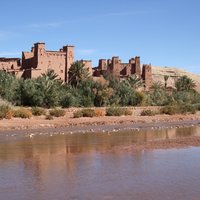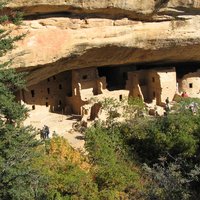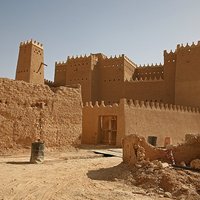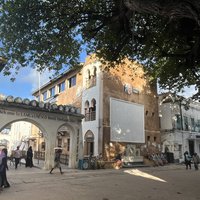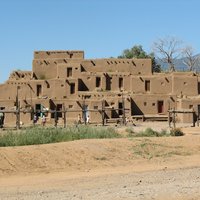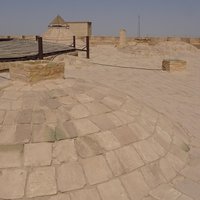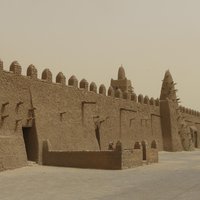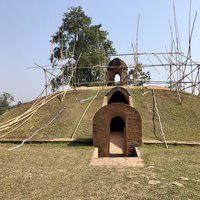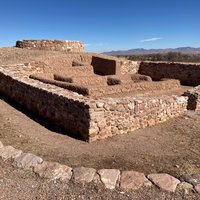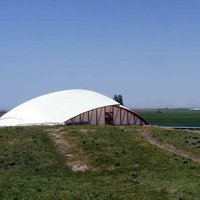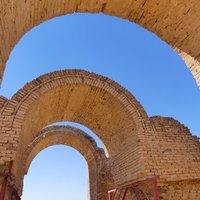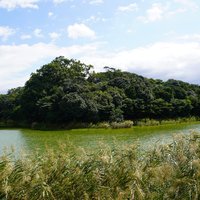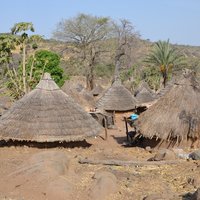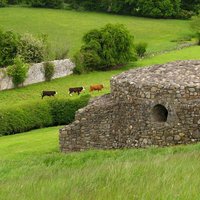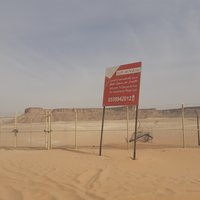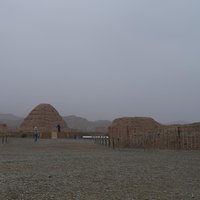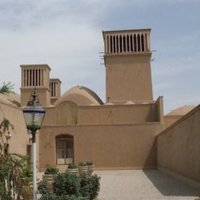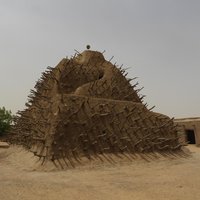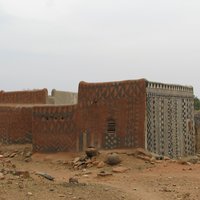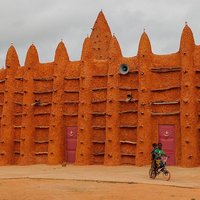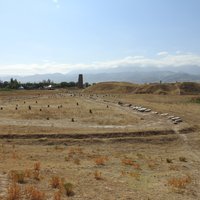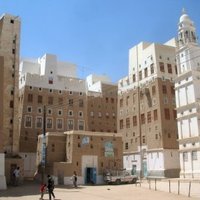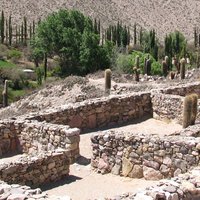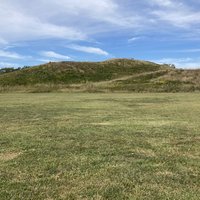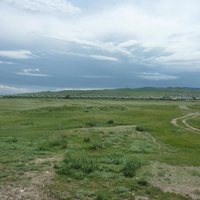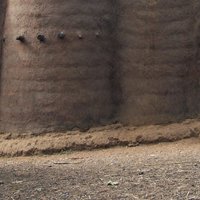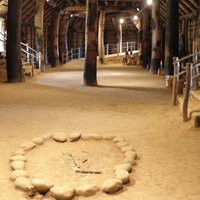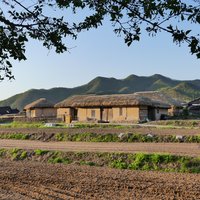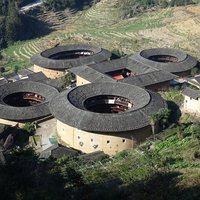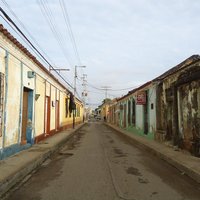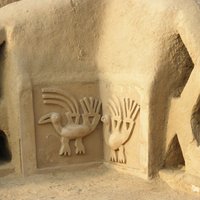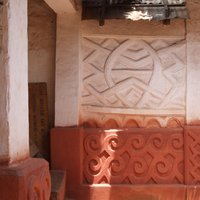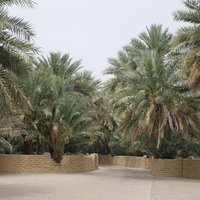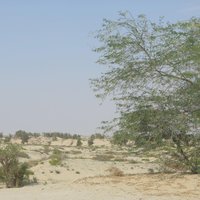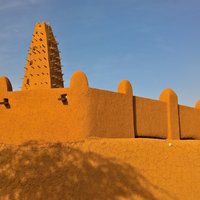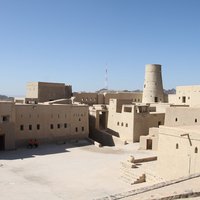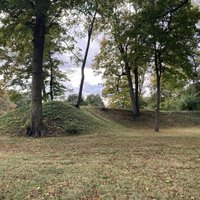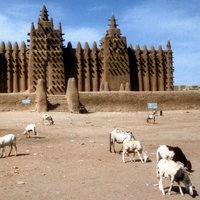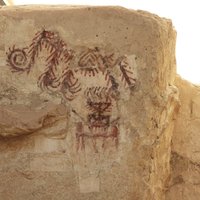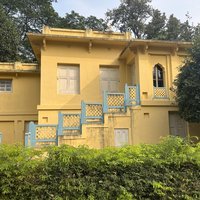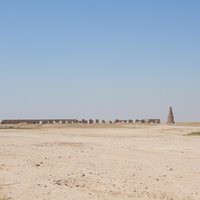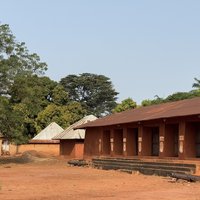Connected Sites
-
-
-
"It bears witness to a building method that is well adapted to its environment, to the use of adobe in major palatial complexes, .." (OUV crit iv)
-
"The section consisting of MUD-BRICK BUILDINGS covers an area of some 21ha" (AB ev)
-
-
Caravanserais of the Central Plateau deserts in the Arid and Warm Climate: "their voluminous body and thick walls made of masonries like mudbricks, dried bricks or stones served as an insulation and optimized the temperature of the interior day and night." – "The outside and inside facades were generally made of bricks but at some caravanserais they were replaced by mudbricks or mudbrick blocks." (Nomination file, p. 111, 118)
-
-
"Each moidam (or maidam) is an earthen mound (Ga-Moidam) covered in vegetation, topped by a small shrine (Dole or Chou Cha Li) within a low octagonal wall (Garh)." (Ab Ev)
-
provide exceptional evidence of the development of adobe architecture in North America, and in particular of the blending of this with the more advanced techniques of Mesoamerica (OUV)
-
mud brick houses (AB ev)
-
"The majority of the buildings of the city were built with sun-dried mud-bricks" (AB ev)
-
"the largest of the kofun within the nominated series are close to 500 metres in length, and are significant accomplishments of earthen architecture and engineering" (AB ev)
-
"huts built in the ritual villages have earthen walls; in contrast, huts outside of the villages are made out of bamboo" (AB ev)
-
Newgrange : henge
-
"The religious and administrative sectors feature a monumental building named "souk", which might have functioned as a market. It has a square layout with projected corner towers and bastions, as well as thick mudbrick walls six to seven metres above the plain." (AB Ev)
-
"Rammed earth, mud bricks and wood are the main materials used to construct the buildings of the funerary complex." (AB ev)
-
Yazd is also one of the largest cities built almost entirely out of adobe. (wiki)
-
"fortified circular earthen ramparts clad with timber" – "Construction of these permanent defensive earthworks involved the massive use of turf (in blocks and strips), local loam, earth and clay, combined with prolific quantities of wood (stones were used in some cases, e.g. in gateway walls at Trelleborg)." – "The nominated property comprises a series of five archaeological sites (earthworks) which, overall, possess a general state of conservation that is good." (Nomination file, p. 28, 52, 263)
-
-
"an earthen architectural complex" (AB ev)
-
-
Jiahoe, Gaochang
-
-
-
"The site consists of an integrated complex of earthen monuments" (OUV)
-
Karakorum, Mud walls
-
-
"artificial earthen mounds" (Official description) – "The 17 component parts of the nominated serial property include settlements, burial areas, and ritual and ceremonial sites that include stone circles and earthworks." (AB Ev) – For example, Component Part 013 (Kiusu Earthwork Burial Circles) (Nomination file, p. 85)
-
Most of lower class houses in Yangdong are mud wall house
-
Wolseong Fortress "The fortress was built in 101 AD. The east, west, and north walls were built on stone/earth foundation covered with clay. -Kyongju by Kim, Yong-nam (published by Woojin Press, Seoul, Korea) 2008
-
-
Coro's traditional buildings are built of earth - adobe, or earth reinforced in a technique known as "bahareque".
-
"The undulating high-mountain landscape was slowly adorned with towns built in tapia - or cob - and bahareque - plaited cane and mud walls -, with mud roof tiles." (Nomination file, p. 73)
-
-
-
“Gongsanseong Fortress consists of both earthen wall sections and stone wall sections, although most parts are stone walls. The total length of the fortress amounts for 2,660m (stone walls: 1,925m; earthen walls: 735m).” - Nomination File
-
-
mud brick constructions
-
Al-Qubbah Mosque and other buildings
-
-
Its ruined walls and towers
-
"these earthworks consist of embankment walls enclosing huge spaces, with carefully positioned and often monumental gateways" (AB ev)
-
-
The Arslantepe mud-brick architecture, due to its antiquity, advanced technology, and state of preservation, is also an outstanding example of a traditional building system representative of a millenarian culture shared by all Near Eastern communities. (...) It has been widely exposed and preserved in perfect and integral state, with the original mud-brick walls, mud plaster and floors, internal features and paintings (...). (Executive summary, p. 4)
-
"The Uttarayan area was established to the north of the Ashrama from 1919 with the construction of two mud brick buildings (one of which, Konark, still stands), followed by five additional houses for Rabindranath Tagore. These show various experiments with the thermal performance of mud buildings" (AB ev)
-
Sumerian sites
-
"The main building materials are fired brick, mud-brick and adobe" (AB ev)
-

